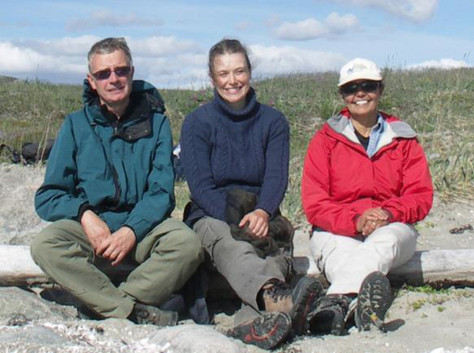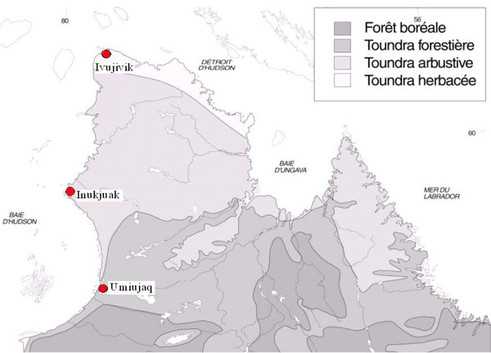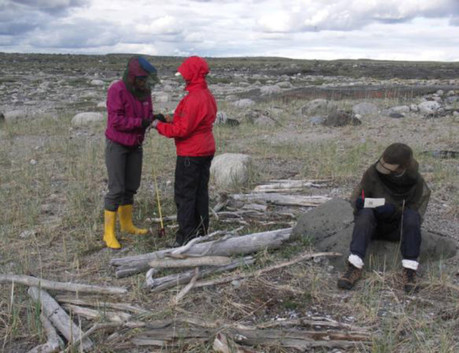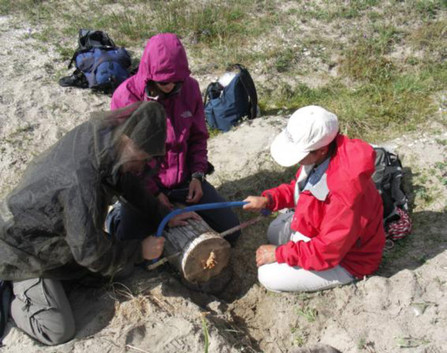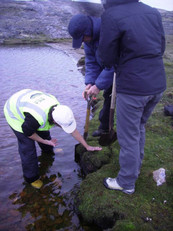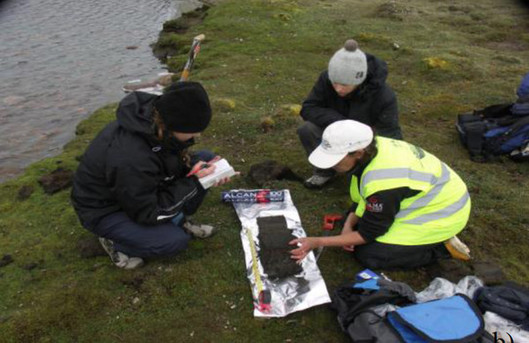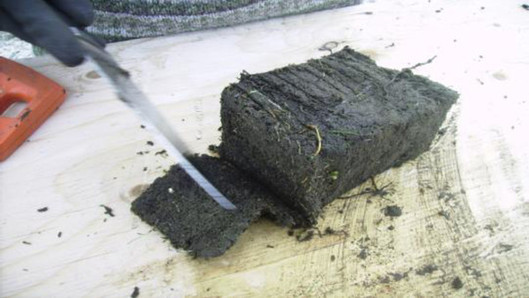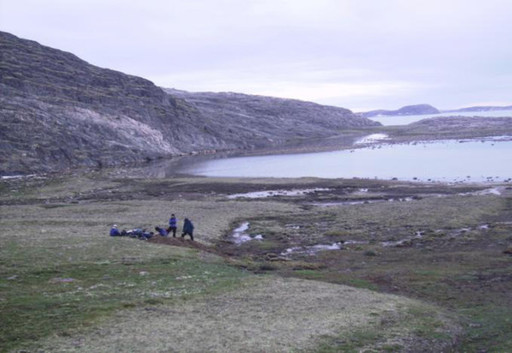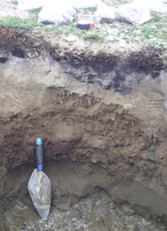Activities and broadcast
Summary of the fieldworks of 2010, by Stéphanie Steelandt
Wood resources had a special importance in the daily lives of the Paleo and Neo-Eskimo in Nunavik. Indeed, wood was used for various purposes: frames and roofs of semi-subterranean houses, boats (e.g. kayaks, sleds), tools for hunting (bow), everyday objects (e.g. spoons), artworks (statues), and firewood (combustion). In the Arctic, the most common source of wood was driftwood collected from beaches, whereas in the Subarctic, the wood could come from local trees or trees taken from the forest tundra or boreal forest that lay a few miles to the south. My Ph.D project will document the spatio-temporal availability of this resource by conducting dendro-chronological and anatomical studies of driftwood collected along the eastern shore of Hudson Bay. This project is part of the "environment" module of CURA entitled "Time and space among the Inuit of Nunavik”, supervised by Avataq Institute.
The fieldwork for this study took place between July 5th and August 2nd, 2010 in three regions of Nunavik : Ivujivik (on the herb tundra), Inukjuak (on the shrub tundra) and Umiujaq (in the forest tundra) (Figure 2). In each area, driftwood found on the beaches was counted, described, and measured (length, circumference, diameter) (Figure 3). Fragments of wood were also collected (Figure 4). Peat monoliths were taken for paleoecological analysis (pollen) (Figure 5) and geomorphic and stratigraphic surveys were conducted around the archaeological sites to supplement the missing data (Figure 6).
In Ivujivik and its surroundings (Digges islands and Nuvuk islands), the team was assisted by Audrey Gervais (field assistant), Sarah-Aubé Michaud (Masters student), Jonathan Pageau (field assistant) and Adamie Tarkiasuk (Inuit guide and hunter). The archeological sites studied correspond to the Thule KcFs-2 site on NK1 Island and the KdFr-3 site on west Digges Island. Between July 16th and 23rd, the search continued in Inukjuak and its surroundings (Drayton Island) with the assistance of Tommy Weetaluktuk (Avataq member) and Juani Elijassiapik (Inuit guide and hunter). The archaeological study focused on the IbGk-3 site on Drayton Island. Finally, the last two weeks of fieldwork were conducted in Umiujaq and the surrounding area (Richmond Gulf, Belanger Island), where the team was greeted and assisted by Pierre Desrosiers (Avataq archaeologist), Andy Papigatuk (Archeologist assistant), Willie Kumarluk (Inuit guide and hunter) and John Topping (Field Assistant). Charcoal has been found at two Paleo-Eskimo archaeological sites: the HaGbe-7 site on Cairn Island and the Gulf Hazard HaGda-4 site in Le Goulet.

